Quick Summary:
This blog explores how banks can enhance customer experience (CX) by leveraging AI and data analytics to meet growing demands for convenience, personalization, security, and speed. It highlights strategies for improving CX across channels and using data to drive growth, boost loyalty, and stay competitive.
In today’s fast-paced digital age, customer experience (CX) has emerged as a cornerstone for success in the banking industry. Meeting and exceeding customer expectations is no longer optional but a business imperative. Modern technology, particularly data-driven insights and AI, has revolutionized how banks can create exceptional experiences that foster loyalty and growth. By understanding the “what” and “how” of CX improvement, banks can build stronger relationships with their customers and position themselves for future success.
Key Statistics on Enhancing CX in Banking
Customer experience (CX) in banking is undergoing a significant transformation, driven by the integration of AI, data analytics, and a heightened focus on meeting customer expectations. The following statistics illustrate the evolving priorities of banking customers and the opportunities for banks to enhance CX:
- Demand for Personalization: As per reports, 70% of banking customers expect personalized financial advice from their banks.
- Importance of Digital Banking: 91% of consumers consider digital banking capabilities essential when choosing a bank.
- Trust in AI for Security: 70% of consumers feel comfortable with AI being used to prevent fraud, reflecting trust in advanced technologies.(Report)
- Willingness to Pay for Convenience: 79% of banking customers are ready to pay more for services that offer convenience and efficiency.(Report)
What Do Banking Customers Want?
Understanding what customers expect from their banking experience is the foundation for improvement. Banking customers are no longer passive participants but active consumers who demand convenience, transparency, and personalization. Here are key factors driving their expectations:
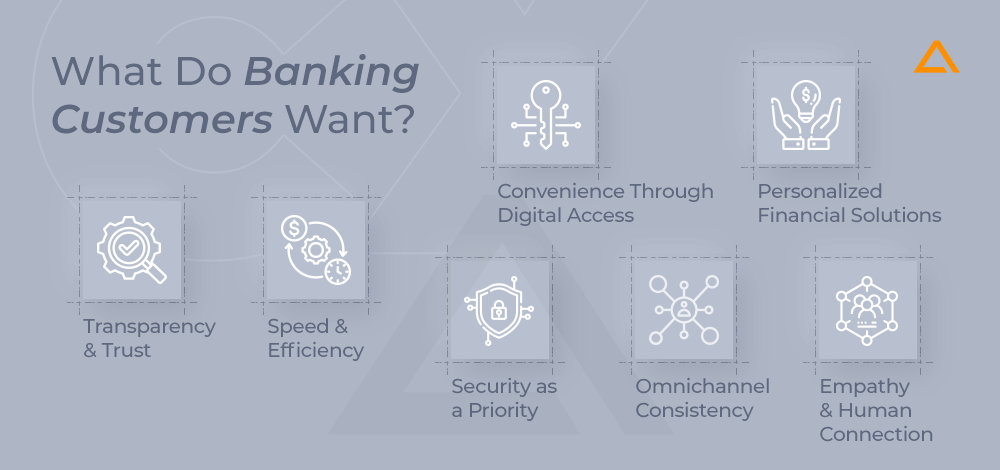
Convenience Through Digital Access
Customers want seamless access to banking services, whether through mobile apps, online portals, or ATMs. The expectation is for services to be available anytime and anywhere, without unnecessary delays or complexities.
Personalized Financial Solutions
The era of one-size-fits-all banking is over. Customers expect banks to understand their individual needs and offer tailored solutions, such as personalized loan options or customized savings plans. AI and machine learning play a critical role in analyzing customer data to deliver these insights.
Transparency and Trust
Transparency is key to building trust. Customers value clear communication regarding fees, terms, and conditions. They are also becoming increasingly concerned about ethical data usage, requiring banks to be upfront about how customer data is collected, stored, and used.
Speed and Efficiency
Whether it’s resolving an issue or completing a transaction, customers prioritize speed. Long wait times or delays can significantly impact their perception of a bank’s efficiency and reliability.
Security as a Priority
With growing concerns about cybersecurity threats, customers demand robust security measures to protect their financial and personal data. Advanced encryption techniques and biometric authentication have become essential components of CX.
Omnichannel Consistency
A consistent experience across all touchpoints is critical. Whether a customer interacts with a mobile app, a website, or a branch employee, the level of service and quality should remain the same.
Empathy and Human Connection
While technology is pivotal, the human touch remains irreplaceable. Customers value interactions with empathetic and well-informed staff who genuinely care about their needs.
What Are the Needs Driving CX in Banking?
Banking customers’ needs often go beyond simple financial transactions. They seek holistic experiences that resonate with their values and lifestyles. Here are the underlying needs that shape their expectations:
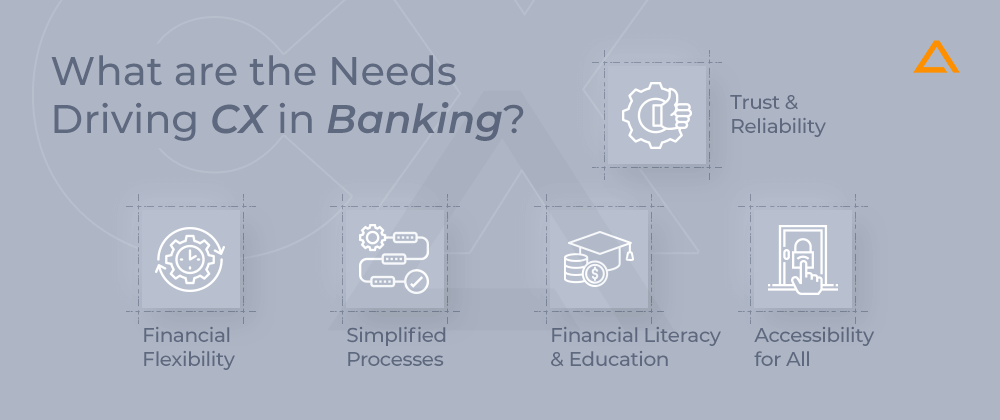
- Trust and Reliability: Trust is the cornerstone of any banking relationship. Customers need to feel confident in their bank’s ability to safeguard their money, data, and personal information.
- Financial Flexibility: Customers seek flexibility in the products and services they use. Whether it’s a tailored mortgage plan or dynamic savings options, the ability to choose what fits their circumstances is crucial.
- Simplified Processes: Customers appreciate simplicity. Lengthy forms, confusing processes, and unnecessary red tape frustrate users. They want banks to streamline their services using intuitive interfaces and automated workflows.
- Financial Literacy and Education: Many customers lack the expertise to navigate complex financial landscapes. They need clear, easy-to-understand guidance to make informed decisions, and banks that provide such support stand out as trusted advisors.
- Accessibility for All: Inclusivity is becoming increasingly important. Whether it’s catering to older generations unfamiliar with digital tools or providing options for differently-abled customers, accessibility is a growing priority.

Looking for BFSI IT Solutions?
Get fast-track BFSI digital transformation with secure, scalable solutions!
Why Is CX Crucial for Banks?
CX is not just about satisfying customers; it’s about fostering loyalty, increasing profitability, and building a strong brand image. Here are some reasons why CX is vital for banks:
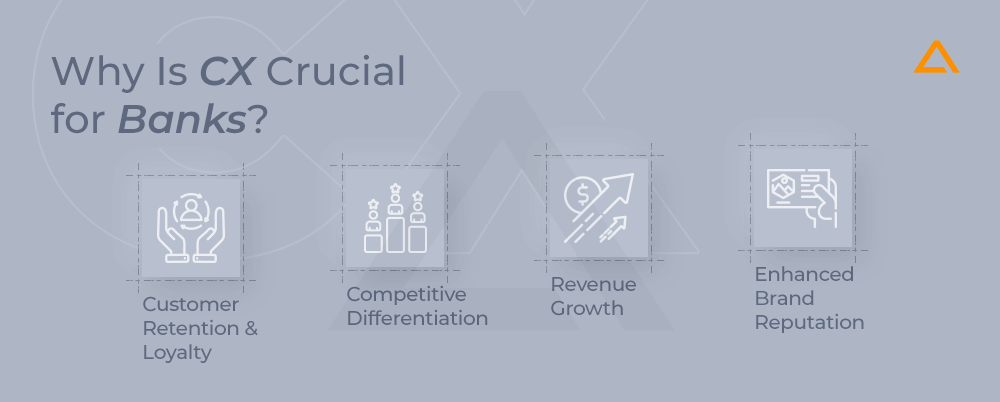
- Customer Retention and Loyalty: Exceptional CX encourages customers to stay with a bank for the long term. Loyal customers are also more likely to recommend their bank to others, creating a ripple effect.
- Competitive Differentiation: In an increasingly crowded market, where products and services can often seem similar, CX becomes a critical differentiator. Banks that invest in CX stand out from their competitors.
- Revenue Growth: Positive experiences lead to higher engagement. Satisfied customers are more likely to explore and adopt additional products and services, such as loans, investment plans, or credit cards.
- Enhanced Brand Reputation: A strong focus on CX contributes to a positive brand image. Banks known for exceptional service are more likely to attract and retain customers in the long run.
How Can Banks Improve CX Using Data and AI?
Leveraging modern technology, particularly data analytics and artificial intelligence (AI), is the key to transforming CX in the banking sector. Here are actionable strategies banks can adopt:
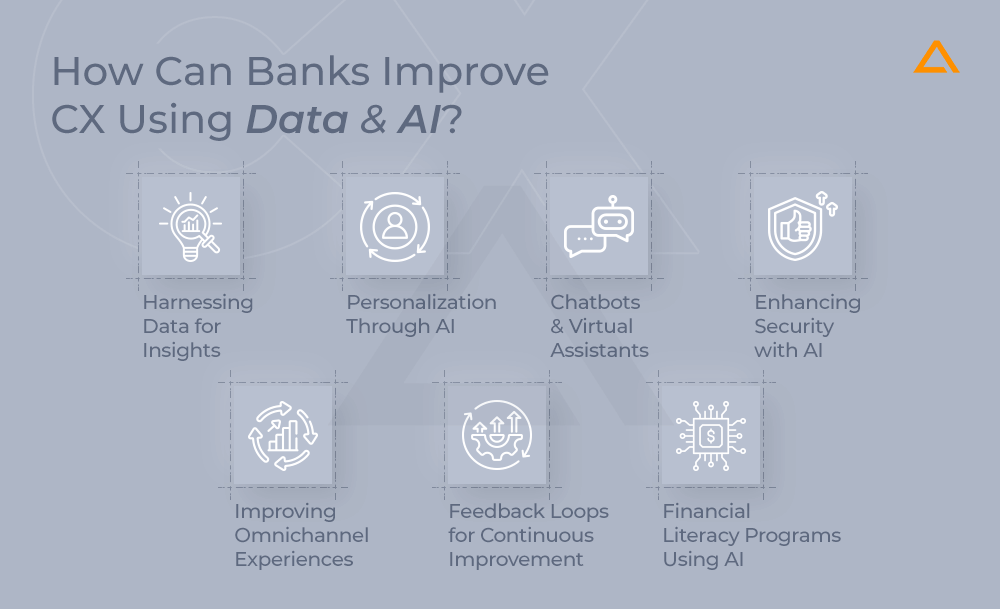
Harnessing Data for Insights
Banks collect vast amounts of customer data daily. By using advanced analytics, they can uncover patterns and preferences, enabling them to make informed decisions. For example, predictive analytics can identify when a customer might need a loan or an investment product, allowing the bank to offer relevant solutions proactively.
Personalization Through AI
AI and machine learning algorithms can analyze individual customer behaviors and preferences to deliver personalized recommendations. For instance, an AI-powered app could suggest budgeting tips or investment opportunities tailored to a user’s spending habits.
Chatbots and Virtual Assistants
AI-driven chatbots are transforming customer service. Available 24/7, these virtual assistants can handle a wide range of queries, from account balance checks to transaction histories. By automating routine tasks, banks free up human agents to focus on complex issues that require empathy and critical thinking.
Enhancing Security with AI
Advanced AI tools can detect unusual transaction patterns or potential fraud in real time. Biometric authentication methods, such as facial recognition and fingerprint scanning, further enhance security, making customers feel safer.
Improving Omnichannel Experiences
AI helps banks maintain consistency across all touchpoints. For example, if a customer starts a loan application online and completes it in a branch, AI systems ensure the transition is seamless, with all necessary data readily available.
Feedback Loops for Continuous Improvement
Data analytics can process customer feedback from surveys, reviews, and social media to identify pain points and areas for improvement. Banks can then make data-driven adjustments to their processes and offerings.
Financial Literacy Programs Using AI
AI-powered platforms can create personalized financial education programs. These tools can simplify complex financial concepts and deliver interactive learning experiences tailored to each customer’s knowledge level.

Measuring the Success of CX Initiatives
Implementing CX strategies is only half the battle; measuring their impact is equally important. Banks can use the following key performance indicators (KPIs) to evaluate their success:

| Metric | Description |
| Net Promoter Score (NPS) | Measures customer loyalty by gauging how likely customers are to recommend the bank to others. |
| Customer Satisfaction (CSAT) | A straightforward measure of how satisfied customers are with their interactions. |
| Customer Effort Score (CES) | Assesses how easy it is for customers to complete specific tasks, such as opening an account or resolving an issue. |
| Retention and Churn Rates | Tracks how many customers remain loyal over time versus those who leave. |
Wrapping up!
Improving CX in banking is not a one-time effort but a continuous journey. By leveraging data and AI while maintaining a human-centric approach, banks can meet and exceed customer expectations. The result is a stronger, more trusted relationship between banks and their customers, ensuring mutual growth and success in a competitive landscape.


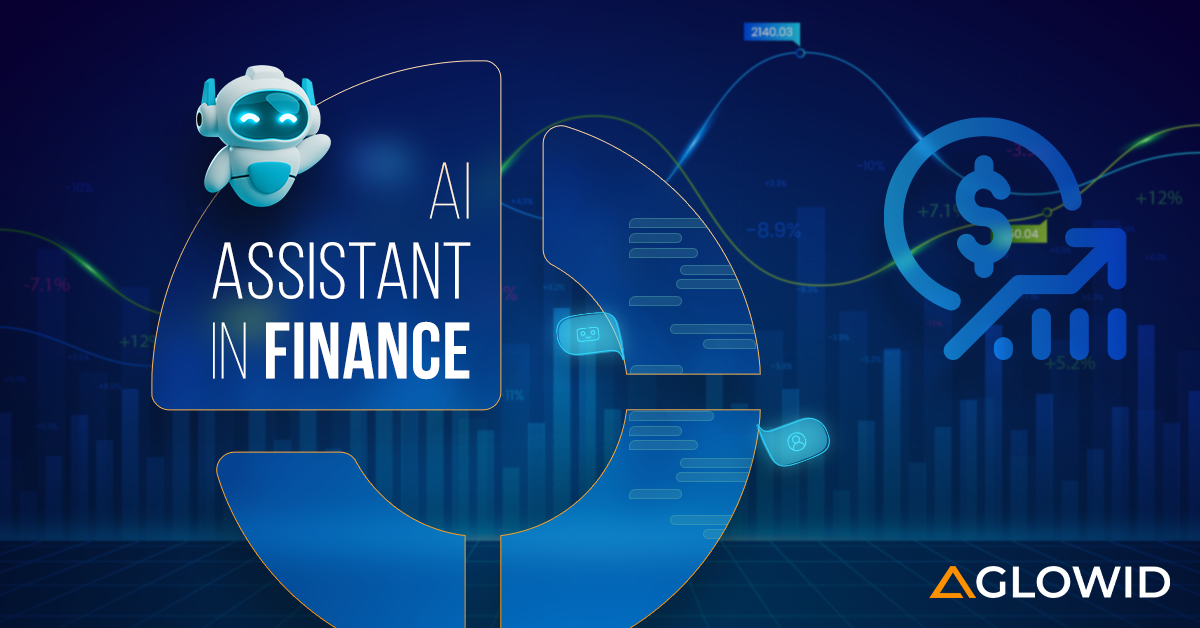


 Say
Say